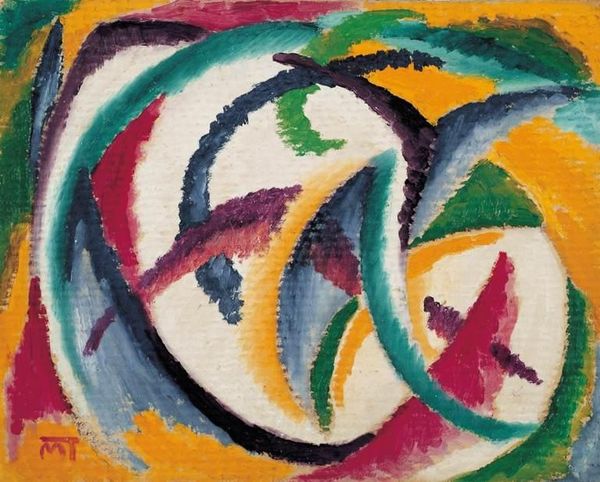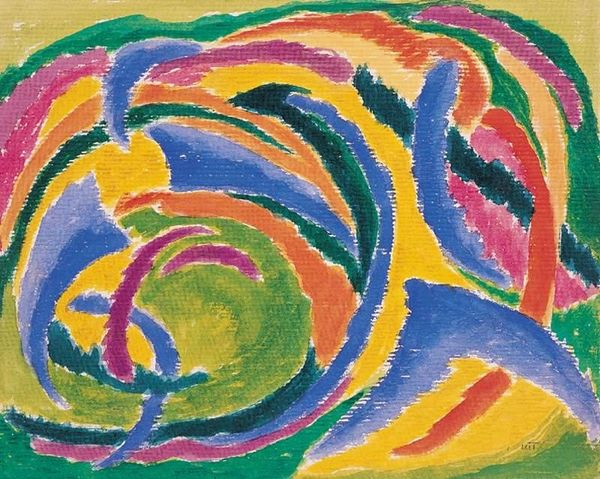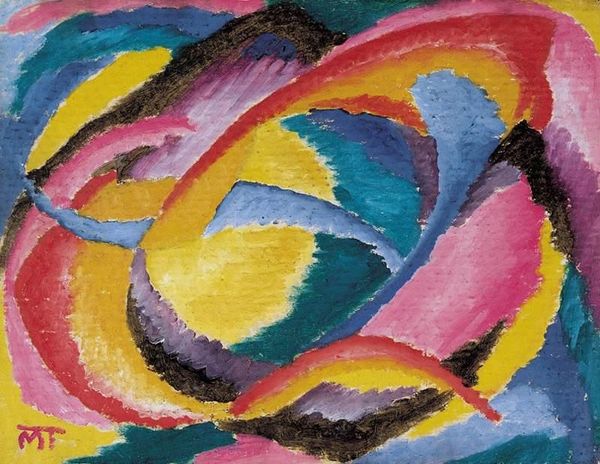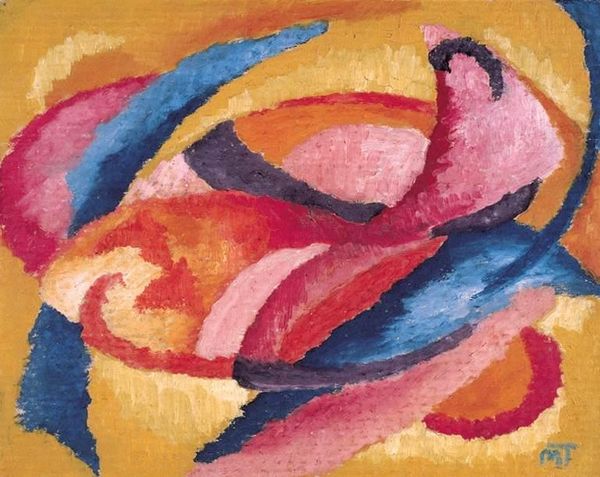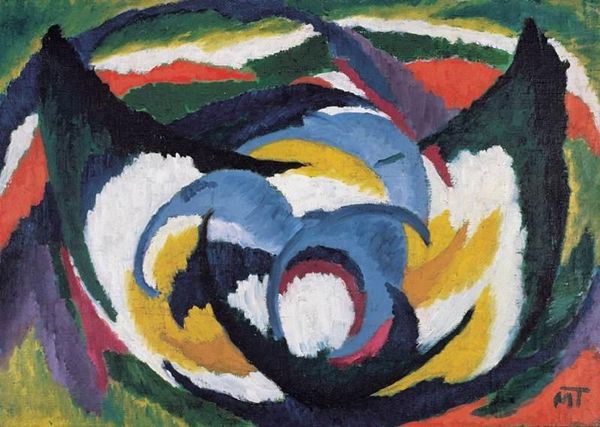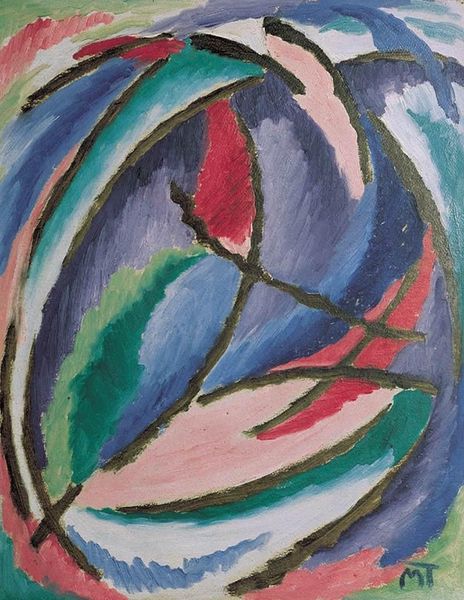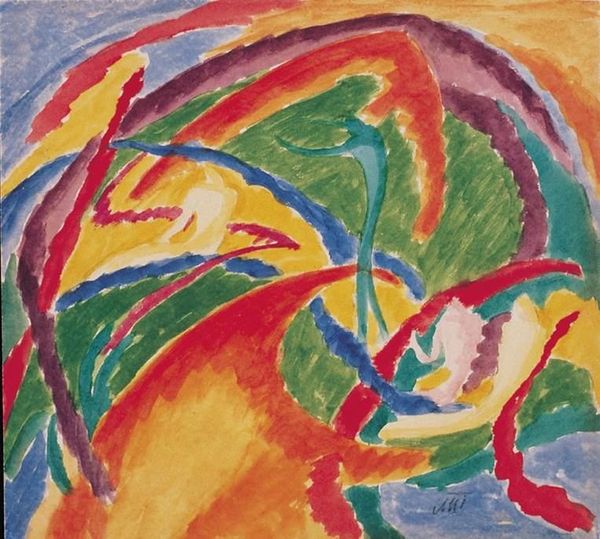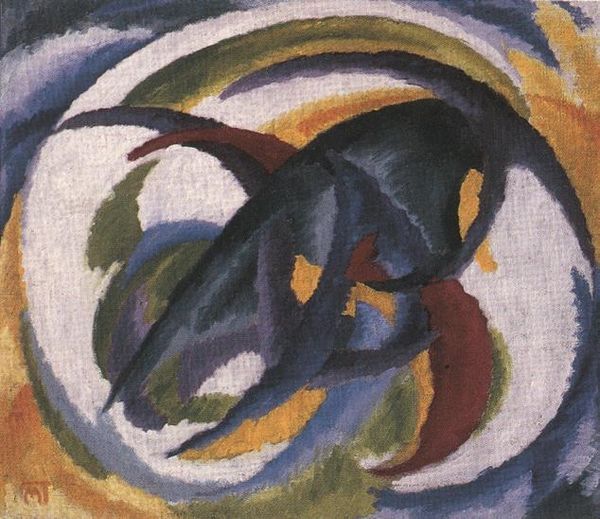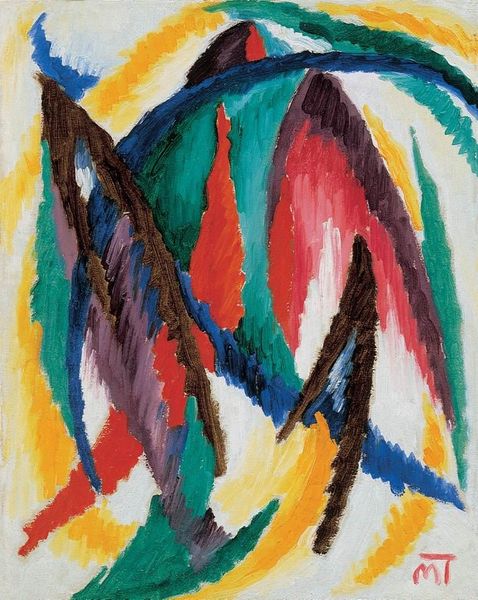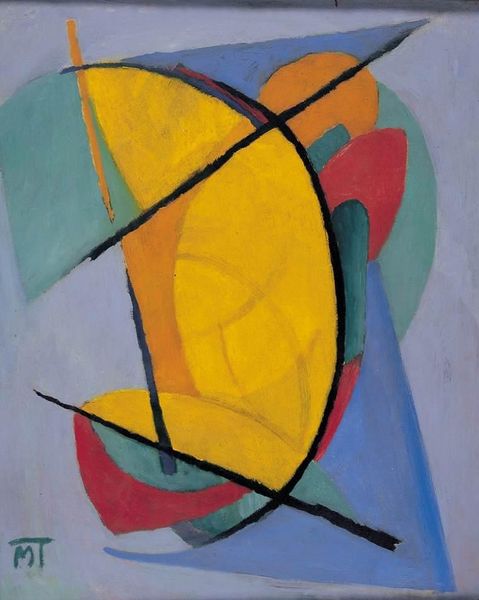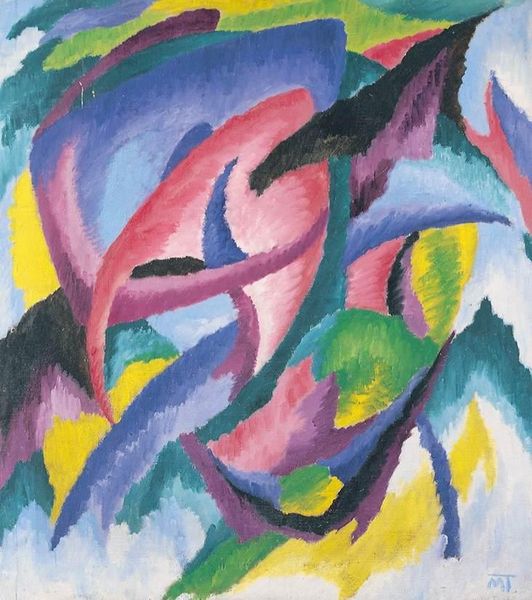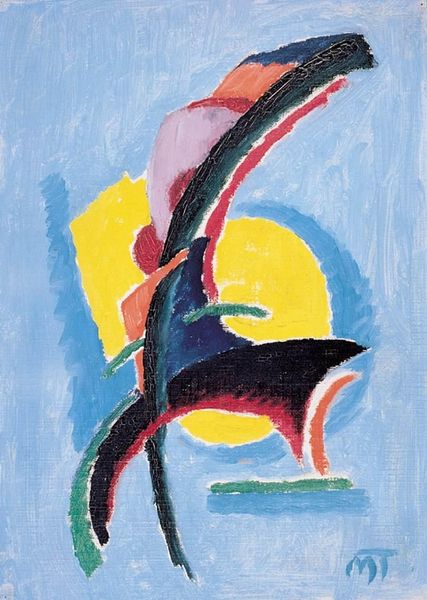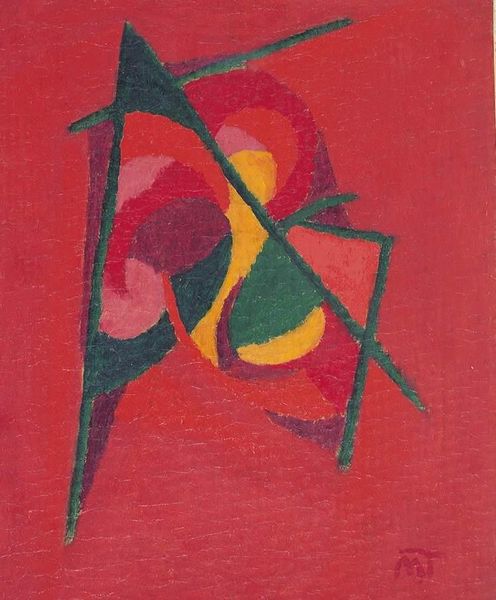
painting, pastel
#
painting
#
form
#
geometric pattern
#
abstract pattern
#
expressionism
#
geometric-abstraction
#
abstraction
#
line
#
pastel
#
modernism
Copyright: Public domain US
Curator: This pastel piece, entitled "Composition," was created in 1920 by Janos Mattis-Teutsch. Editor: It’s intriguing, isn't it? All these colours vying for space on a dark ground, like cosmic debris spinning out of control. A certain dynamism. Curator: Indeed. It really speaks to the explosion of artistic freedom at the time. The artist employed pastel, allowing for the bold color juxtapositions and the subtle gradations of tone. We can see how the material itself contributes to the overall effect, lending a particular softness that is unusual given the sharp geometric forms. Editor: Yes, those hard angles intersecting a nearly perfect circle... it reminds me of early Futurist manifestos. The circle seems to signify totality, while the shards suggest forces fragmenting that ideal. Given the date, it’s easy to see this work through the lens of post-war disillusionment, wouldn’t you say? Curator: That's certainly one valid interpretation. What's also relevant is Mattis-Teutsch's connection to the activist avant-garde milieu. They challenged the established traditions and redefined not only art but also the artist’s role in society. Editor: Right. It's all so charged. And then that almost meditative central circle-- the tension creates a strong visual push and pull. Like an eye, maybe even the eye of a storm. It pulls at the subconscious. Curator: Perhaps it symbolizes both hope and anxiety. A representation of that transitional period that the artist himself lived through, expressed via very humble materials such as pastel. A common choice at the time. Editor: That’s an interesting point. And it brings so much additional complexity. Thank you for highlighting those fascinating layers. Curator: A pleasure to explore those interpretations together!
Comments
No comments
Be the first to comment and join the conversation on the ultimate creative platform.
